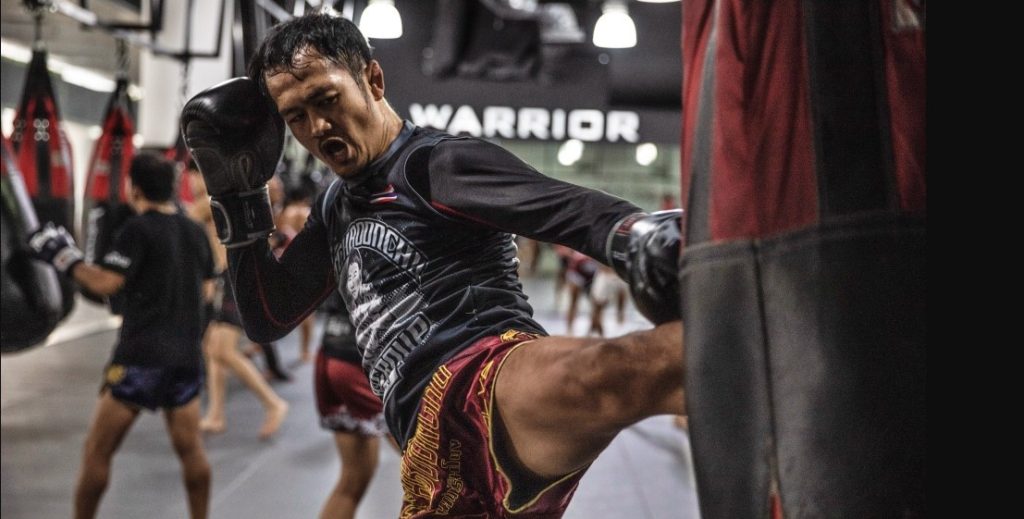Fighters : Muay Thai, also known as “The Art of Eight Limbs,” is a traditional martial art that originated in Thailand. While it’s known for its powerful strikes and rigorous training, the sport is deeply embedded in Thai culture and history. One of the most visible symbols of this cultural heritage is the armband, known as the Pra Jiad. Muay Thai fighters wear these armbands around their biceps, and they are far more than decorative accessories—they hold deep spiritual, historical, and emotional significance.
Table of Contents
Historical Origins of the Pra Jiad
The origins of the Pra Jiad date back hundreds of years to a time when Thailand was frequently at war. According to legend, Thai warriors would tear off a piece of cloth from their mother’s or loved one’s clothing and tie it around their arms before heading into battle. This cloth served as a good luck charm, offering protection and emotional strength during times of conflict.
Over time, this tradition transitioned into Muay Thai as the martial art evolved from battlefield combat to sport. The fighters began wearing armbands in homage to those ancient warriors and to retain that connection to their heritage.
| Aspect | Details |
|---|---|
| Origin | Ancient Thai military practice |
| Symbolism | Protection, luck, emotional connection |
| Traditional material | Cloth from loved ones |
| Modern use | Cultural heritage, spiritual focus |
Cultural and Spiritual Significance
In Muay Thai, the Pra Jiad is more than a fashion accessory—it serves as a spiritual talisman. Many fighters believe that the armband has the power to ward off evil spirits, provide inner strength, and bring good fortune during their fight.
Before a match, the armbands are sometimes blessed by a monk or trainer in a ritual that includes chanting and prayer. This blessing is believed to imbue the Pra Jiad with spiritual power, similar to how amulets are used in Thai Buddhism.
| Cultural Element | Role of the Pra Jiad |
|---|---|
| Spirituality | Believed to carry protective blessings |
| Ceremony | Often blessed before fights |
| Respect for tradition | Honors the heritage of Thai warriors |
| Psychological impact | Boosts fighter’s confidence and mental focus |
Symbol of Respect and Discipline
Wearing the Pra Jiad is also a sign of respect—towards one’s trainers, the gym, and the broader Muay Thai tradition. In many camps, fighters do not simply take a Pra Jiad off a shelf. Instead, they must earn the right to wear it through consistent training, humility, and discipline. In this way, the armband functions similarly to a belt in other martial arts like Karate or Taekwondo.
For example, beginners often do not wear a Pra Jiad. Only when a student demonstrates commitment and skill may the trainer bestow one upon them, often during a small ritual or ceremony.
| Level of Fighter | Pra Jiad Usage |
|---|---|
| Beginner | Usually not worn |
| Intermediate | May earn Pra Jiad as a sign of progress |
| Advanced/Professional | Wears armband in both training and fights |
| Trainers/Monks | May bless the armbands before significant events |
Design and Color Meaning
| Color | Possible Meaning |
|---|---|
| Red | Courage, power, and aggression |
| White | Purity, focus, and peace |
| Black | Strength and seriousness |
| Gold | Honor, high achievement, and excellence |
| Green | Growth and adaptability |
| Mixed Colors | Personal significance, or a combination of qualities |
In some cases, the colors represent the fighter’s gym or trainer. Others may have customized Pra Jiads made for special fights or championship matches.
Modern Adaptations
As Muay Thai has grown globally, so too has the visibility of the Pra Jiad. Fighters from around the world now wear these armbands, sometimes adapting them to suit their own cultural or personal traditions. For example, a foreign fighter might incorporate a family symbol or national color into their Pra Jiad.
However, this globalization has also led to some commercialization, where Pra Jiads are mass-produced and sold online. While these armbands may look authentic, they often lack the ceremonial or emotional significance of traditionally earned or blessed ones.
| Modern Trend | Implication |
|---|---|
| Global use | Promotes Muay Thai culture internationally |
| Commercial availability | Sometimes reduces spiritual or personal value |
| Customization | Allows fighters to personalize and honor their own background |
| Traditional vs. Modern | Debate exists on maintaining authenticity vs. adapting to modern contexts |
Do Fighters Wear Pra Jiad During Fights?
In modern professional Muay Thai bouts, fighters usually wear the Pra Jiad during their pre-fight ritual, especially the Wai Khru Ram Muay (the ceremonial dance performed to honor teachers and ancestors). Once the dance is complete, the armbands may be removed before the actual fight begins, depending on the rules of the stadium or governing body.
| Competition Type | Pra Jiad Use |
|---|---|
| Traditional Thai bouts | Worn during Wai Khru, sometimes removed before fighting |
| International bouts | Usage varies based on promotion or country |
| Amateur fights | More flexible, often worn throughout |
| Children/youth matches | Usually wear Pra Jiad for symbolic reasons |
The Pra Jiad is a powerful symbol in Muay Thai—a reminder of the sport’s ancient warrior roots, a talisman of protection, and a mark of respect and achievement. While modern times have brought changes in its use and design, the core significance of the armband remains deeply rooted in Thai culture and martial philosophy.
Whether you’re a fighter, fan, or student of Muay Thai, understanding the role of the Pra Jiad adds a new layer of appreciation for this dynamic and sacred martial art.


